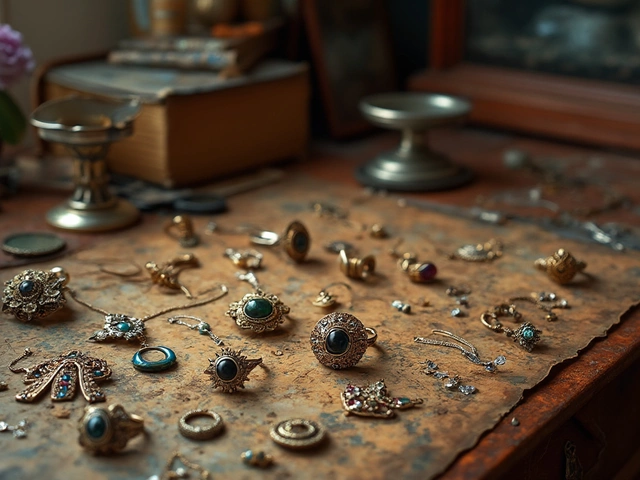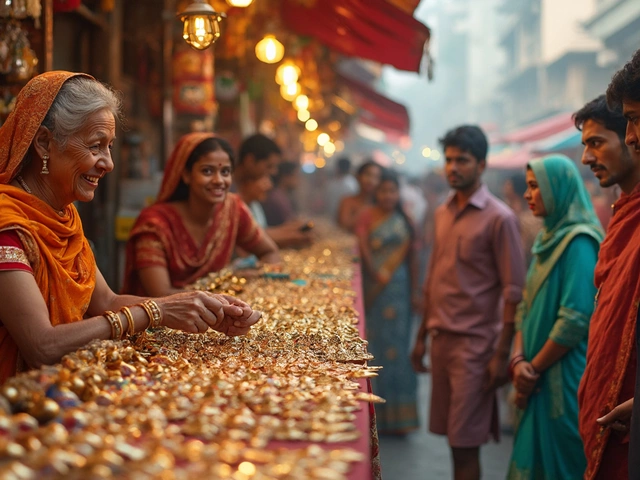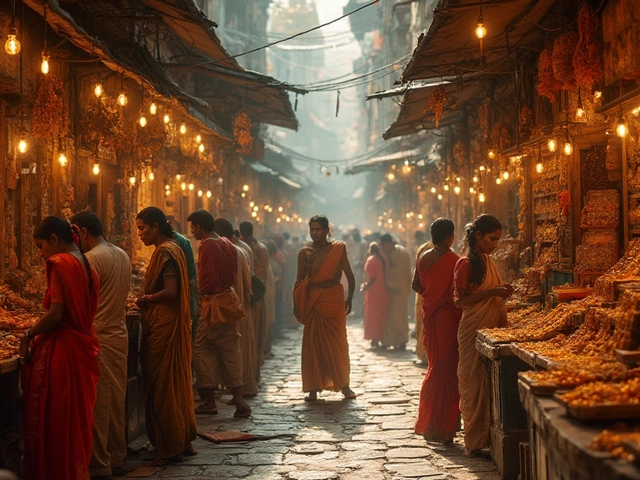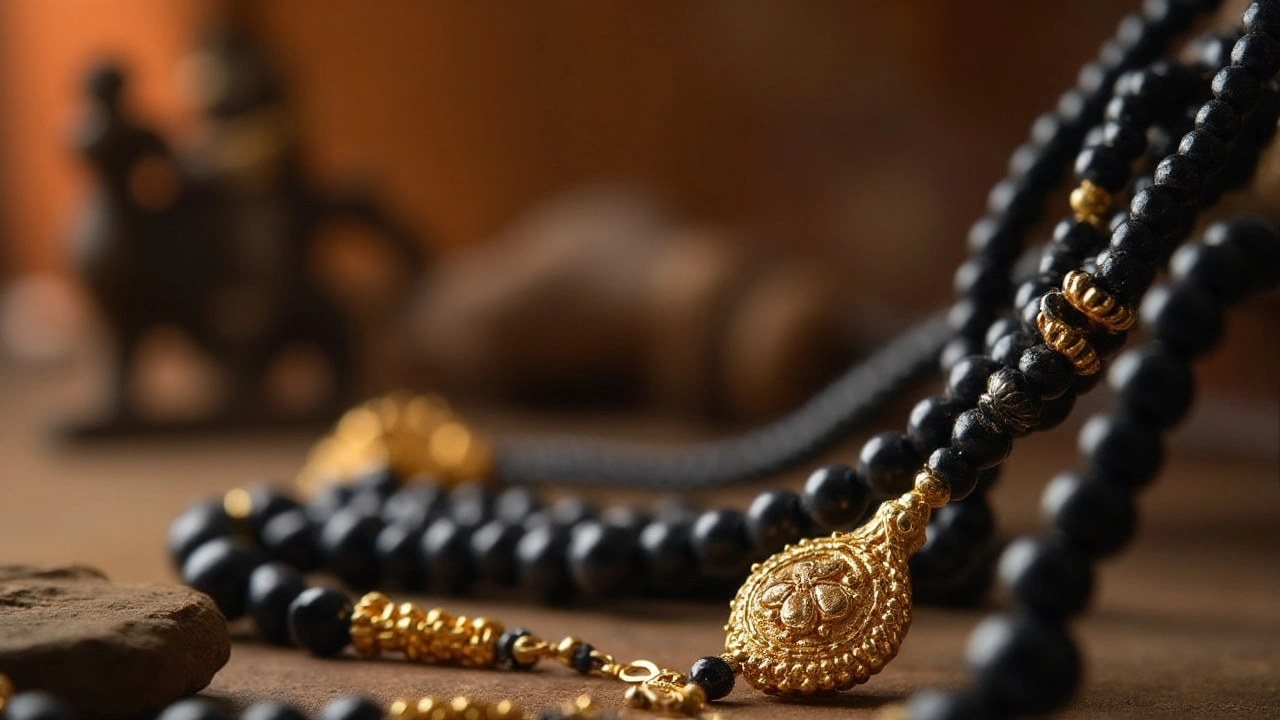
In the realm of traditional Indian jewelry, the mangalsutra stands as a beacon of cultural relevance and spiritual symbolism. Its distinct design often features a string of black beads, carefully intertwined, playing a role far deeper than simple adornment.
These black beads are more than just decorative elements. Thoughtfully placed within the mangalsutra, they are steeped in traditions and beliefs that span centuries. Each bead carries with it stories and symbolism that have evolved but endure, connecting generations of women to their heritage.
Understanding the significance behind these beads invites us into a world where adornment meets meaning, and where ancestral wisdom informs modern choices. Join us as we explore the layers of meaning and craftsmanship involved in this cherished piece of jewelry.
- Cultural and Historical Significance
- Symbolism of the Black Beads
- Crafting a Traditional Mangalsutra
- Modern Mangalsutra Designs
Cultural and Historical Significance
The mangalsutra, a traditional emblem of matrimony, is steeped in rich history and cultural essence that dates back centuries. Originating from the Indian subcontinent, this piece of jewelry is cherished not only for its beauty but also for its profound significance. The word "mangalsutra" is derived from the Sanskrit words "mangal," meaning auspicious, and "sutra," meaning thread, symbolizing the auspicious bond of marriage. Traditionally, it was believed that the black beads within the mangalsutra designs had protective powers that safeguarded the husband and wife from evil eyes and negative energies. These beads were meticulously crafted, each carrying with it prayers and intentions of prosperity and longevity for the couple, woven into the very fabric of cultural traditions.
"The black beads of the mangalsutra are not just mere beads; they are a representation of hundreds of years of cultural evolution," notes Anjali Sen, a renowned historian specializing in South Asian arts.
To understand its importance, it's crucial to delve into the rituals that accompany its creation and presentation. Historically, the mangalsutra was more than a piece of jewelry; it was a sacred thread tied during the wedding ceremony, signifying the union of two souls. The design featuring black beads among most Indian communities played a key role in religious and spiritual practices, marking the transition of women from a single life to a new phase of marital status. Over the ages, while the strictness of these traditions somewhat diminished, the symbolism behind the mangalsutra persists, serving as a cultural bridge between ancient customs and present-day beliefs.
As society changes, so do the rituals associated with it, yet the intrinsic values are still upheld. Within various communities, different interpretations and styles are seen, reflecting a blend of both regional and historical influences. In places like Punjab, for instance, the mangalsutra includes additional elements such as gold coins, while in Maharashtra, specific patterns in the black beads' arrangement are integral, highlighting how cultural diversity shapes the essence of this piece. This adaptability over time does not dilute but enriches the tradition, creating a tapestry of stories connected by the common thread of marriage.
The significance of the mangalsutra, with its distinctive black beads, is not just limited to solemnity; it is also a reflection of artistic expression. The artisans, often skilled goldsmiths, embed not just materials but their craftsmanship, embodying the spirit of their cultural heritage. The process itself—striking the gold, threading the beads, and ensuring every part is perfect—is a testament to the labor and love invested in each piece. While some newer designs adapt to modern tastes, incorporating diamonds or white gold, the heart of the traditional mangalsutra designs remains unchanged, preserving the legacy within the contours of modernity.

Symbolism of the Black Beads
The presence of black beads in a mangalsutra holds a particular charm, rooted deeply in tradition and faith. These small, glossy orbs aren’t merely ornamental; they stand as symbols carrying a host of beliefs handed down through generations. In many Indian communities, the black beads are viewed as protective amulets, shielding the bride from envy and evil eyes. This belief in amuletic properties dates back to ancient times, where black—often associated with weapons and protection—was woven into garments and adornments to repel negative energy.
The choice of color is significant. Black has historically been seen as a color of modesty and mystery, protecting the sanctity of marriage from external threats. Many believe that these beads act almost as tiny soldiers, aligning around the bride’s neck, ready to safeguard the new couple’s journey into married life. This symbolic barricade against malevolent forces is a testament to the lengths communities have gone to use adornments as a physical manifestation of unseen guards.
"The black beads in a mangalsutra are a testament to how deeply spirituality is woven into the very fabric of Indian traditions." — Dr. Mira Sengupta, Cultural Anthropologist
Though the beads bring this protective canopy, they are also reminders of a husband's promise. It's believed that with each bead strung on the sacred thread, a vow is reiterated. These vows of loyalty, love, and respect mirror the intertwined beads in their strength and steadfastness. While the exterior role of the beads is protective, they symbolize an interior mutual bond, tangibly expressing commitments that words alone can't quite capture.
Modern Interpretations
Today's world sees a fusion of traditional with contemporary meaning in mangalsutra designs. While some embrace western stylistic trends, many designers and brides-to-be retain the sacred black beads, blending them with gold or diamond elements, thus marrying age-old beliefs with modern aesthetics. It's intriguing to see how even in today's fast-paced world, the symbolism remains intact. Marriages are celebrated with less extravagance, yet the black beads retain their position as fundamental as vows exchanged.
Interestingly, recent surveys of jewelers highlight that nearly 70% of modern mangalsutra purchasers look for designs where traditional elements like the black beads are prominent. This preference illustrates an ongoing respect and adherence to what these beads represent. While materials like gold signify wealth and stability, it’s the humble black beads that whisper stories of the past and offer promises for the future, making them irreplaceable in the context of nuptial jewels. This ongoing continuity between past and present through the black beads is a narrative worth sharing over and over.
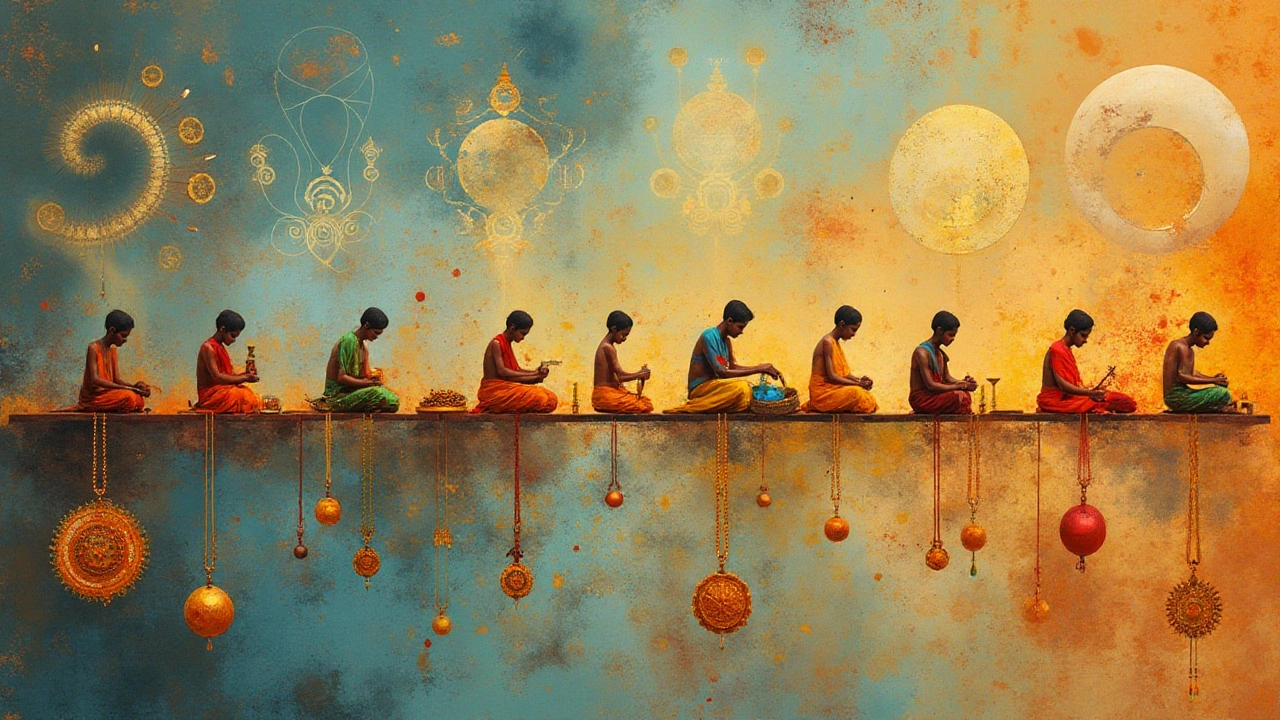
Crafting a Traditional Mangalsutra
At the heart of every mangalsutra lies not just its aesthetic beauty, but a labor of love, intensive skill, and a dash of age-old tradition. Crafting a mangalsutra starts with a vision—a design that seamlessly integrates age-old traditions with the contemporary tastes of today’s women. Artisans, often belonging to families that have nurtured this craft for generations, begin by selecting materials that first speak to both quality and cultural authenticity.
The selection and arrangement of black beads is a detailed process that calls for extreme precision and attention to detail. Each bead is chosen for its uniformity in size and luster. Frequently, these beads are interspersed with gold, symbolizing not just wealth but divine sanctity. The gold used in these designs, often ranging between 18k to 22k, is crafted into delicate motifs that are emblematic of regions varying across India. Whether it’s intricate paisleys or simplistic geometric forms, each pattern carries with it stories of matrimonial bonds.
“The mangalsutra is more than jewelry; it's a homage to the purity of relationships,” a renowned jeweler once remarked, emphasizing both the emotional and tangible value embedded in each creation.
In modern workshops, while technology aids in certain processes, much of the mangalsutra's creation remains a hands-on endeavor. Skilled artisans thread each bead with care, ensuring the strands are robust yet flexible enough to provide comfort to the wearer. The clasp, a tiny but vital part of the mangalsutra, is crafted with precision to hold the strands securely, allowing the pendant—or 'tanmaniya'—to lie elegantly upon the collarbone. This balance between durability and grace is what ensures that the mangalsutra can be cherished and worn daily.
Once crafted, the mangalsutra undergoes a series of meticulous inspections. Every bead, every link, and every motif is reviewed for integrity and alignment, confirming that what reaches the buyer isn’t merely jewelry, but a promise of prosperity and protection. These checks are reminiscent of an era where quality was valued over quantity, a philosophy that continues to resonate firmly in the hearts of traditional jewelers today.
The time it takes to craft a traditional mangalsutra can vary significantly, taking anywhere from several days to weeks depending on the complexity of the design. This dedication to detail and precision is what ensures each piece remains a timeless addition to any collection of traditional jewelry. Crafted with care, celebrated by wear, the mangalsutra remains a beautiful manifestation of not just the beauty of craftsmanship but the heart of Indian culture.
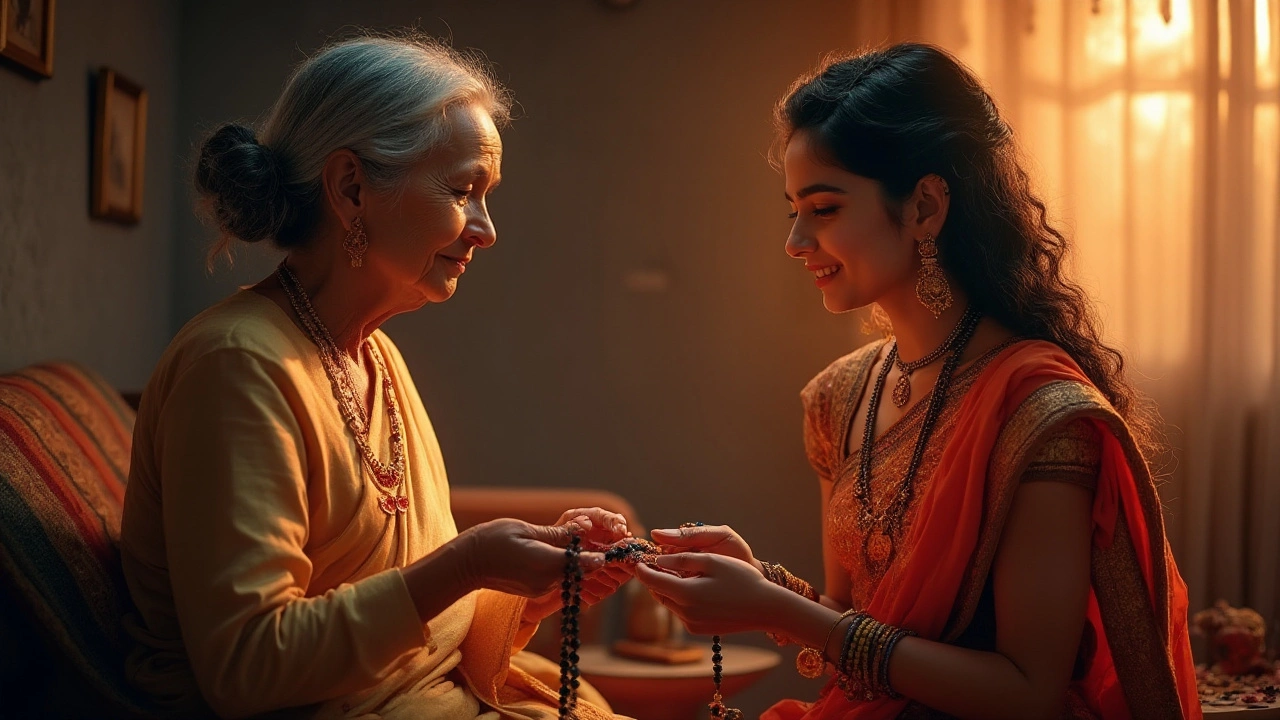
Modern Mangalsutra Designs
The art of creating Mangalsutra designs has gracefully evolved over the years, harmoniously blending tradition with contemporary styles. Today, modern mangalsutras often incorporate innovative elements without losing the symbolic essence anchored deeply within cultural roots. They cater to an audience looking for unique pieces that still respect their heritage. These transformations reflect in the unexpected versatility of the designs, where the sacred black beads are often accompanied by diamonds, emeralds, or even intricate gold work. The result is a piece that speaks to both tradition and modernity, allowing women today to wear their jewelry proudly as a statement of personal style and cultural identity.
Contemporary designers understand the evolving needs and tastes of their clientele, and this acknowledgment is seen in the minimalist yet striking designs available today. Unlike the ornate styles of the past, many modern mangalsutras emphasize simplicity. Lightweight chains replace heavier options, making them perfect for everyday wear without compromising on significance. The traditional black beads remain a constant but are often interspersed in a manner that offers a fresh outlook. For instance, a single black bead may be offered attention amidst a sleek gold chain or with diamond-studded pendants, capturing the eye with a splendid yet subtle allure.
"Modern jewelry is an evolving narrative that blends personal storytelling with classic elegance, seamlesly weaving past with the present," expresses noted jewelry designer Arpita Mehta.
Another interesting trend in this space is the customization available in mangalsutra designs. It is common for modern brides to collaborate with designers to create pieces that resonate personally. They might include initials, birthstones, or even bespoke charms, woven alongside those black beads, resulting in a piece that truly speaks to them. Customizable options offer a solution to those wanting a mangalsutra that embodies their unique journey, delivering an exquisite balance between tradition and personal touch.
The modern mangalsutra also embraces international influences, reflecting global cultural exchanges. Young designers often draw inspiration from across the world, embedding meaningful symbols and structures into their designs, which often broadens the appeal. Although rooted in Indian tradition, these pieces transcend boundaries, speaking to a universal audience that appreciates both style and substance. Incorporating different materials and techniques such as enamel work or brushed gold gives these designs an edge, making them versatile pieces that can accessorize any attire, from casual to formal. It's a trend that is reshaping perceptions, celebrating the past while fully embracing the future.
